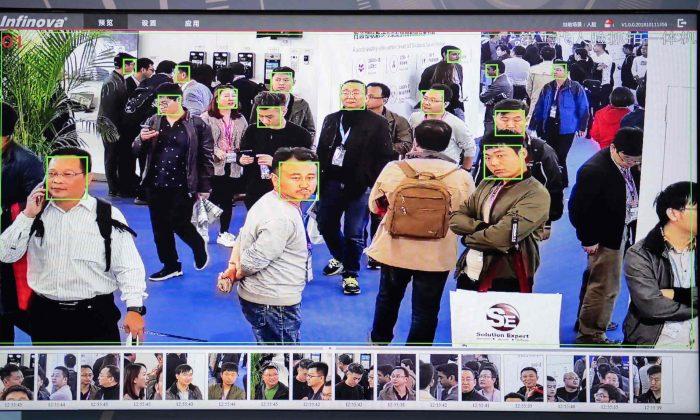China is the dominant global driver of artificial intelligence surveillance by supplying hardware to 63 countries, with 36 also partnering in China’s “One Belt, One Road” initiative.
Foreign-policy think tank Carnegie Endowment for International Peace (CEIP)
reports that China’s AI surveillance champion is Huawei, which provides systems to at least 50 countries worldwide. Combining the integrated state-control of Huawei, Hikvision, Dahua, and ZTE, China holds over four times the AI surveillance market share compared to Japan’s NEC Corporation, which holds the second highest percentage with just 14 national clients.
The global proliferation of AI surveillance technology is expanding at a faster rate than most analysts have forecasted. According to the AI Global Surveillance (AIGS) Index of 176 countries reviewed by CEIP, seventy-five have implemented AI surveillance applications including 56 nations employing smart city/safe city platforms; 64 nations employing facial recognition systems; and 52 employing smart policing.
The “
Freedom on the Net 2018” report identified that among the sixty-five nations that had accessed AI surveillance technology, eighteen, or about a quarter, were using hardware developed by Chinese companies. But the AIGS Index found in 2019 that the number of those 65 nations currently using Chinese systems had almost tripled to forty-seven.
China’s AI surveillance product pitches are usually accompanied by what CEIP refers to as “
soft loans” to encourage governments to purchase its equipment. Soft loan tactics were particularly relevant for Chinese customers in Kenya, Laos, Mongolia, Uganda, and Uzbekistan, which could not otherwise gain access to AI technology. CEIP suggests, “This raises troubling questions about the extent to which the Chinese government is subsidizing the purchase of advanced repressive technology.”
The KrebsOnSecurity blog has identified numerous software “back doors” in Chinese AI surveillance systems from
Huawei, Hikvision,
Dahua and
ZTE that are believed to allow Peoples’ Liberation Army agents access to siphon data. The Trump administration and the U.S. Department of Homeland Security issued sweeping
restrictions over the last year against purchases of Chinese AI surveillance systems.
U.S. companies supply AI surveillance technology to thirty-two countries. IBM is the U.S. leader which supplies eleven nations; followed by Palantir and Cisco with nine and six nations respectively. France, Germany and Israel also now offer AI surveillance system.
The AIGS Index found that 51 percent of advanced democracies deploy AI surveillance systems; versus 37 percent of closed autocratic states, 41 percent of electoral autocratic/competitive autocratic states, and 41 percent of electoral democracies/illiberal democracies deploy AI surveillance technology.
CEIP suggests the most important factor in determining whether governments will deploy AI surveillance technology for repressive purposes is the quality of their governance. Full democracy AI surveillance technology deployments range from safe city platforms to facial recognition cameras. Whereas autocratic and semi-autocratic countries are more prone to abuse AI surveillance to achieve certain political objectives.
China, Russia, and Saudi Arabia are the world’s leaders in exploiting AI technology for mass surveillance purposes to achieve political objectives. Other governments with dismal human rights records exploit AI surveillance reinforce repression in more limited ways.
The AIGS Index found there is a strong relationship between a country’s
military expenditures and a government’s use of AI surveillance systems: 40 of the world’s top 50 military cumulative military spenders use AI surveillance technology.
CEIP warns that Liberal Democracies are not taking adequate steps to monitor and control the spread of sophisticated technologies linked to a range of privacy and human rights violations. Examples of AI algorithms moving faster than regulatory control include the use of “
deepfake” videos that blur the line between truth and falsehood.
Chriss Street is an expert in macroeconomics, technology, and national security. He has served as CEO of several companies and is an active writer with more than 1,500 publications. He also regularly provides strategy lectures to graduate students at top Southern California universities.





